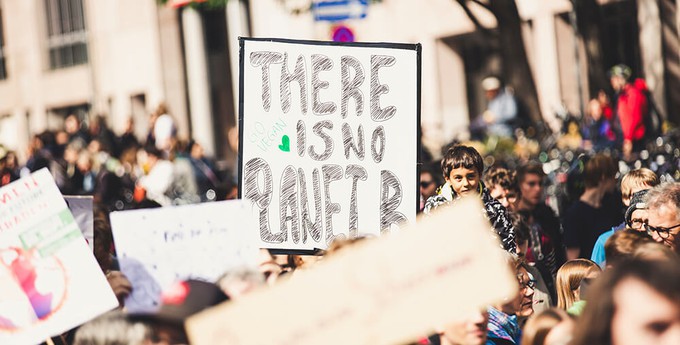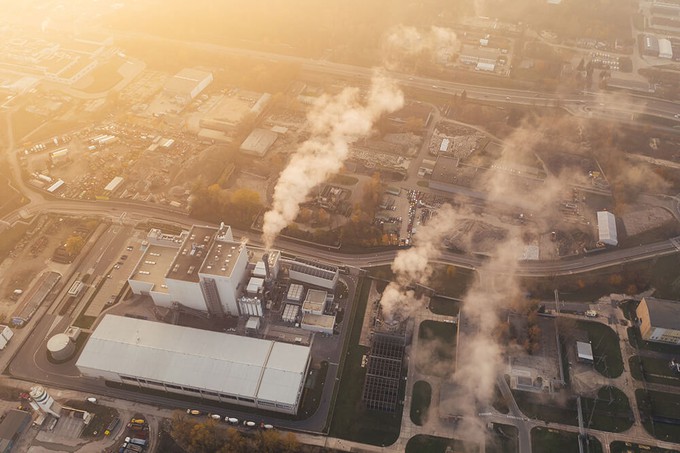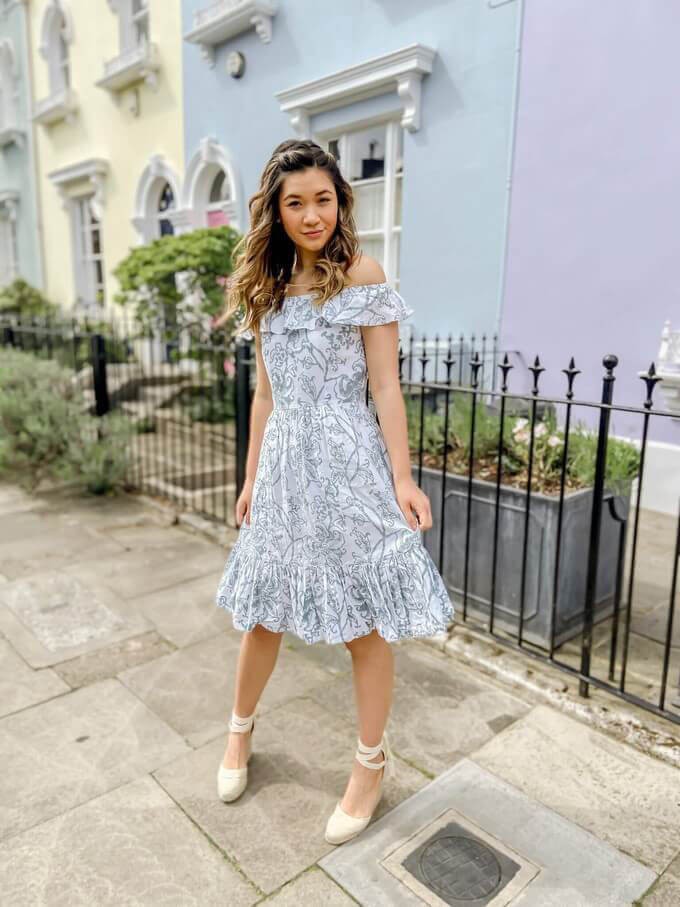- Clothes
- Bags
- Accessories
-
Inspiration
- Shoes
Fashion & Climate Change: What Planet Is Your Wardrobe On?

Do fashion and climate change really belong to the same conversation?
Sadly, they definitely do.
How is fashion contributing to climate change?
There are many ways in which this industry and, especially, fast fashion is harming the environment, but the main problem with fashion and climate change involves carbon emissions.
Fashion accounts for 10% of greenhouse gases generated from human activities, which is more than aviation and shipping… combined!
High carbon emissions

While they happen at every stage of the supply chain, most carbon emissions are generated when manufacturing or sourcing materials.
Synthetic ones like polyester (which make up 63% of all our clothing), come from fossil fuels, so their production is energy-heavy:
- 70 million barrels of oils are used to make polyester fibres every year
- The carbon footprint of a polyester shirt is 5.5 kg, more than double that of cotton
Unfortunately, natural materials like cotton aren’t always a solution either.
Traditionally grown cotton, also extremely popular for clothes, has a direct impact on climate change by causing soil degradation (and that’s without looking at other environmental problems like pesticides and huge amounts of water): we need healthy soil to absorb CO2!
But the tie between fashion and climate change doesn’t end here.
As well as distribution and shipping, clothes release greenhouse gases when they’re disposed of, whether by being incinerated or slowly releasing methane when chucked in landfills.
A fast approach

In our opinion, the main problem with fashion and climate change is the unsustainable pace of the clothing industry.
Fast fashion produces garments without taking the environment into consideration and encourages consumers to see them as disposable, prompting them to buy new clothes every season to follow trends.
We now produce 400% more clothes than twenty years ago but wear them less, an average of 7 times per piece.
The result? 92 million tonnes of waste.
Every year.
How YOU can reduce the impact of fashion on climate change
Luckily, there are also many brands working really hard to lower the CO2 emissions and environmental footprint of their clothing production.
For example, creating timeless designs rather than following trends, upcycling to reduce waste, or experimenting with lower-impact fibres involving fruit waste or biodegradable synthetic options.
Still, we know exactly how you feel: how can you make a difference when there are still so many huge companies that keep producing and marketing tons of clothes this way?
But you can.
For real.
That’s what our Noor tackled during a TED Talk:
So, now that you know that you can make a difference when it comes to fashion and climate change, here’s our advice:
- Start seeing clothes as durable rather than disposable
- Shift the focus from fast fashion being pleasurable to shopping responsibly, perhaps avoiding temptations (e.g. big shopping centres, influencers promoting hauls…)
- Switch to slow fashion: only buy what you actually need or can see yourself wearing for years
- Choose sustainable brands that are actively trying to minimise the impact of fashion on climate change and the environment
- Demand transparency: vote with your money, and boycott brands that aren’t doing their part
- Trade or swap clothes with friends, and consider buying second-hand, too
- Fix them if they’re damaged
- When buying several items online, try choosing them from the same store
- Don’t purchase different options just because you can return the rest! Free returns have a massive environmental cost
- Wash them less often to reduce the environmental impact of your laundry
We believe that fashion and climate change should be discussed together more often. Why don’t you start the conversation with your circle by sharing this article?
You can also find more responsible brands on Project Cece and receive helpful tips to embrace a more sustainable fashion lifestyle.
Share our story
Related articles
Beginner’s Guide to Sustainable Fashion: Here’s Wear to Start
What’s the problem with fast fashion? What are ethical clothes? And where do I even START? Our beginner’s guide to sustainable fashion covers all that for you.
How to Ditch Fast Fashion & Switch to Ethical Clothes: 10 Tips
Ready to take the first step towards a more sustainable wardrobe? Here are some practical tips to ditch fast fashion and discover ethical alternatives.
Problems with Fast Fashion: Cheap Clothes, High Hidden Costs
From child labour to toxic dyes, there’s a high hidden cost behind cheap labels. Check out the problems with fast fashion and discover a sustainable solution.
Project Cece is a platform that collects ethical fashion from vetted brands and shops in one place. Browse ethical fashion for women and men and find items that fit your style, budget and values!




